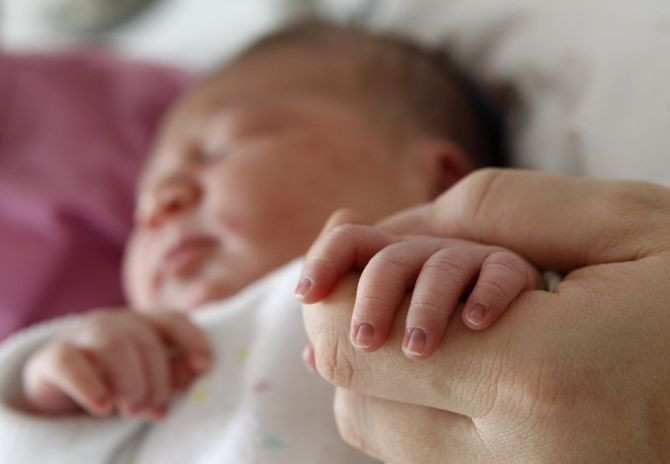U.S. Home Birth Rate Jumps, Reversing Long Decline

The number of home births in the U.S. jumps 29 percent from 2004 to 2009 reversing a 14 year trend of decline according to the National Center for Health Statistics on Thursday.
The rate of home births has peaked since 1989, but they only account for less than one percent of all births. Experts said that the rate of homes births is actually a pretty rapid increase.
"Forty, 50 years ago, there was this idea that hospital birth was more modern. Now it's the opposite," Marian MacDorman, statistician at the Centers for Disease Control and Prevention told CNN.
The report indicated that the overall increase in home births was mostly driven by white women accounting for approximately 90 percent of the total increase from 2004 to 2009.
Approximately 1 out of 90 births by white women is a home birth, which rose by 36 percent between the years 2004 to 2009. However the report also showed that home births to non-Hispanic white women also increased by 14 percent from 1990 to 2004, when the proportion of home births declined for most demographics.
Homes births declined for American Indians, Asians, Hispanics, and black women from 1990 to 2004, and from 2004 to 2009 the only increase in home births among these demographics was for Asians and Hispanic women while the blacks and American Indian home birth rates stayed about the same.
Home births are also most common among married women over the age of 35 who have had several children.
MacDorman suggested that that the increase could be that home births cost a third less than birth at hospitals, or dissatisfaction with hospital care for women in labor because doctors and nurses are often caring for more than one patient at a time whereas a woman can have a midwife attending only to her.
Most home births are attended by midwives. In 2009, 62 percent of home births were conducted by a midwife, 5 percent from physicians, and 33 percent delivered by “other” attendants like a family member or an emergency medical technician.
About 92 percent of hospital births are delivered by doctors, 7 percent by midwives and 1 percent by other attendants.
Home births have a lower risk profile than hospital births with fewer births to teenagers or unmarried women. They are also characterized by fewer preterm, low birth weight and multiple births. Researchers said that the lower risk profile of home births suggested that home birth attendants are selecting low-risk women as candidates for home birth.
Researchers said that previous studies show that most home births are intentional or planned, and very few were unintentional of unplanned because of an emergency situation like precipitous labor, labor complications, or been unable to get to the hospital in time.
Out of the 26-state reporting area, 87 percent of home births in 2009 were planned, and 93 percent of home births for white women were planned.
Some women prefer home births over hospital births for a variety of reasons such as a desire for a low-intervention birth in a familiar environment with family and friends, cultural or religious concerns, lack of transportation in rural areas, or financial factors.



























